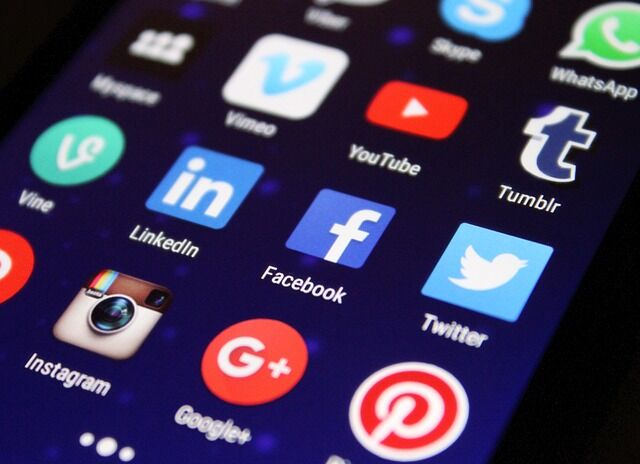Do you remember the thrill of passing secret notes in class? That same excitement is making waves in the literary world, as the epistolary novel—literature’s original “he said, she said” format—stages a remarkable comeback in our digital era. From quill pens to QWERTY keyboards, the art of telling stories through letters has evolved, adapting to our text-happy, email-centric lives with surprising agility. Let’s dive into the resurgence of epistolary novels and discover why this centuries-old technique is suddenly feeling fresher than your latest Twitter feed.
A Blast from the Past: The Epistolary Novel’s Journey
Before we jump into the modern epistolary novel renaissance, let’s take a quick trip down memory lane. Epistolary novels, those crafty tales told through a series of documents (traditionally letters), have been around since, well, people started writing things down and saying, “Hey, this could make a good story!”
The format hit its stride in the 18th century with classics like Samuel Richardson’s “Pamela” (1740) and “Clarissa” (1748). These novels had readers hanging on every word, eagerly awaiting the next letter like it was the latest episode of their favorite Netflix series. Fast forward to the 19th century, and we get gems like Bram Stoker’s “Dracula” (1897), proving that even vampires have a flair for correspondence.
But as the 20th century rolled in, the epistolary novel began to feel a bit… dusty. It was like that friend who still uses a flip phone—charming, but not quite keeping up with the times. The format took a backseat to other narrative styles, becoming more of a literary curiosity than a mainstream choice.
The Plot Twist: Epistolary Novels Strike Back
Just when we thought the epistolary novel might be filed away in literary history, something unexpected happened: the internet. Suddenly, we’re all living epistolary lives, firing off emails, texts, and social media posts like our ancestors penned letters. And where life goes, literature follows.
The resurgence of epistolary novels in the digital age isn’t just a comeback; it’s a full-blown revolution. Authors are seizing the opportunity to tell stories through the very mediums we use to communicate every day. It’s as if Jane Austen decided to slide into our DMs, and we’re here for it.
Why the sudden love for this old-school format? Well, it turns out that in our hyperconnected world, the intimacy of personal correspondence still strikes a chord. Modern epistolary novels tap into our voyeuristic tendencies (admit it, we all love a peek into someone else’s inbox) while reflecting the fragmented, rapid-fire way we consume information.
The New Cool Kids: Modern Epistolary Novels Making Waves
Let’s meet some of the trailblazers in this epistolary novel renaissance, shall we? These books aren’t just dusting off an old format; they’re reinventing it for the 21st century.
“Where’d You Go, Bernadette” by Maria Semple (2012) is like the Swiss Army knife of modern epistolary novels. It’s got emails, letters, FBI documents—you name it. Reading it feels like piecing together a deliciously complex puzzle, one document at a time.
For those who prefer their epistolary novels with a side of historical charm, “The Guernsey Literary and Potato Peel Pie Society” by Mary Ann Shaffer and Annie Barrows (2008) delivers. Set post-WWII, it proves that good old-fashioned letters can still pack an emotional punch in the age of emoji.
Want something with a bit more bite? “We Need to Talk About Kevin” by Lionel Shriver (2003) uses letters to unravel a chilling family drama. It’s proof that the epistolary format can handle heavy topics with devastating effectiveness.
For the young (and young at heart), “The Perks of Being a Wallflower” by Stephen Chbosky (1999) captures the essence of teen angst through a series of letters. It’s like reading someone’s diary, but with permission.
And let’s not forget “Dear Committee Members” by Julie Schumacher (2014), which turns the mundane task of writing recommendation letters into a hilarious and poignant story. Who knew academic bureaucracy could be so entertaining?
These modern epistolary novels are just the tip of the iceberg. From science fiction (“This Is How You Lose the Time War” by Amal El-Mohtar and Max Gladstone) to reimagined folktales (“Spinning Silver” by Naomi Novik), authors are pushing the boundaries of what epistolary storytelling can do.
Digital Ink: How Technology is Reshaping the Epistolary Novel
In the age of instant messaging and social media, modern epistolary novels are getting a high-tech makeover. Authors are incorporating emails, texts, tweets, and even emojis into their narratives, creating stories that feel ripped from our own digital lives.
Take “Attachments” by Rainbow Rowell (2011), which weaves a love story through work email exchanges. Or “Eleven” by David Llewellyn (2006), one of the first novels to fully embrace the email format. These books don’t just use digital communication as a gimmick; they explore how our relationships and identities are shaped by the ways we interact online.
Even books that aren’t strictly epistolary are getting in on the act. “The Martian” by Andy Weir (2011) uses log entries to great effect, while “The Word Exchange” by Alena Graedon (2014) incorporates fictitious dictionary entries and online posts to build its dystopian world.
This digital twist on the epistolary format opens up new storytelling possibilities. Authors can play with the immediacy of text messages, the formality (or lack thereof) in emails, and the public/private tension of social media posts. It’s like having a toolkit of narrative devices that perfectly capture modern life.
Why It Works: The Magic of Modern Epistolary Novels
So, what makes the resurgence of epistolary novels so effective in our digital age? For starters, it mirrors the way we actually communicate. We’re all constantly piecing together stories from fragments of information—a text here, an email there, a cryptic tweet that leaves us guessing. Epistolary novels tap into this familiar experience, making the reading process feel interactive and immediate.
Moreover, the format allows for multiple perspectives and unreliable narrators in a way that feels organic. In “Where’d You Go, Bernadette,” for example, the story unfolds through various documents, each offering a different piece of the puzzle. It’s like being a detective, sifting through evidence to uncover the truth.
The epistolary format also excels at creating intimacy. Reading someone’s private correspondence, whether it’s a handwritten letter or a late-night email, feels deliciously personal. It’s a direct line into a character’s thoughts and feelings, unfiltered by traditional narrative distance.
Lastly, modern epistolary novels are incredibly flexible. They can incorporate a wide range of voices, styles, and media, making them perfect for our multi-modal, attention-divided world. Want to include a Buzzfeed-style listicle in your novel? Go for it. A series of increasingly frantic voicemails? Why not? The only limit is the author’s imagination.
Reader’s Delight: How We’re Responding to the Epistolary Revival
So, how are readers reacting to this resurgence of epistolary novels? In a word: enthusiastically. There’s something deeply satisfying about a format that reflects our own communication habits while still offering the escape of a good story.
Many readers report feeling more engaged with epistolary novels, as the format encourages active participation. You’re not just passively consuming a narrative; you’re piecing it together, filling in gaps, and drawing your own conclusions. It’s like being part of the story rather than just observing it.
The format also seems to resonate with younger readers who’ve grown up digital. For them, a novel told through texts and emails feels natural and relatable. It’s literature speaking their language.
Critics and book clubs are loving the revival too. Epistolary novels offer rich ground for discussion, with their multiple perspectives and often ambiguous narratives. They’re also a goldmine for literary analysis, as every choice of format and style can be dissected for meaning.
The Future is Bright (and Full of Notifications)
As we look to the future, the resurgence of epistolary novels shows no signs of slowing down. If anything, the format seems poised to become even more innovative and experimental.
Imagine novels that incorporate real-time elements, updating as you read them. Or stories that use augmented reality to bring letters and documents to life. The line between epistolary novels and interactive fiction could blur, creating new hybrid forms of storytelling.
We might see epistolary novels that play out across multiple platforms—part book, part social media experience. Or works that allow readers to “correspond” with characters, shaping the narrative through their interactions.
As our methods of communication continue to evolve, so too will the epistolary novel. Who knows? The next great American novel might be told entirely in TikTok videos or AR experiences.
The Last Word (For Now)
The resurgence of epistolary novels in the digital age is more than just a literary trend; it’s a reflection of how we live and communicate in the 21st century. These novels speak to our desire for connection, our love of piecing together stories, and our complicated relationship with technology.
As our inboxes overflow and our notification bars never stop blinking, perhaps we’re all unwitting characters in the world’s largest epistolary novel. Every text, email, and post is adding to a vast, interconnected narrative of human experience.
So the next time you dive into a modern epistolary novel, remember: you’re not just reading a story. You’re participating in a centuries-old tradition that’s found new life in our digital world. It’s old meets new—quill pen meets keyboard—creating something entirely unique in the process.
Now, if you’ll excuse me, I have some emails to check. Who knows? The next great epistolary novel might be waiting in my spam folder.




